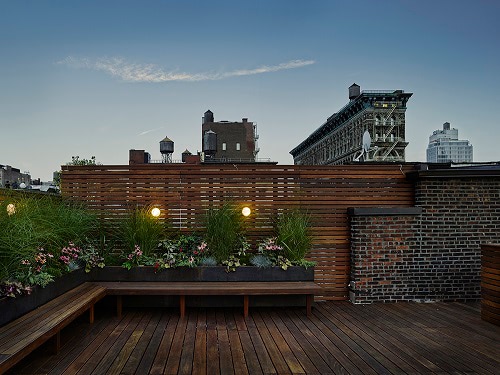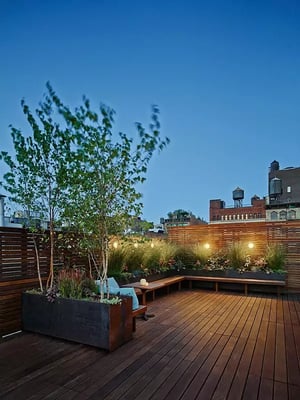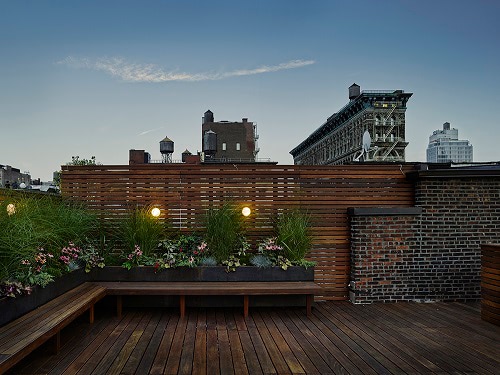
Related Posts



Over the years we have supplied hardwood decking materials for a fair amount of rooftop decks, predominantly in the US. In the past, most of these decks were installed over sleepers. Using sleepers is a great way to build a low clearance deck over a flat roof.
By and large, these rooftop deck designs were very well built, continue to perform admirably and are trouble free. But that does not mean that using sleepers for all rooftop deck designs is the best solution nor does it ensure that the deck will perform well.

The sleepers must be installed parallel to the water flow of the roof or balcony, otherwise they will collect water and debris.
If sleepers are run perpendicular to the natural flow of water, even with weep holes in the sleepers, they will eventually clog or require periodic clean out.
The direction of the sleepers dictates the direction the decking boards must be installed, which sometimes limits the deck design options (or require you to build a complicated matrix of layers of sleepers).
If the roof or balcony surface is not perfectly flat then additional shimming, chamfering and/or adjustments are often necessary.
Wood sleepers will eventually rot.
Adequate ventilation is a critical success factor. Failure to plan for this will likely result in deck boards cupping and misbehaving.
RELATED: DECK INSTALLATION TIPS: INSTALLING DECKING OVER SLEEPERS
and is a great solution for nearly all rooftop, patio top and balcony deck designs. We became the North American distributor of the Eurotec Rooftop Deck System because it addresses all the inherent design and construction concerns of building a rooftop deck with traditional sleepers. This system features quality components and precision European engineering. The company itself is exceptionally well-run and very organized.
Looking for some rooftop deck ideas? Download the free "Rooftop Deck Design Ideas portfolio" today.

Because pedestals are used instead of sleepers, the drainage will flow unimpeded in all directions and the decking boards can be laid out in any preferred design
The adjustability of the pedestal heights help create a perfectly level deck surface, even if the roof is not level.
For roof decks that need more clearance, extenders can be added to the pedestals to create more height. (With sleepers, that would likely require building a complete deck system in top of the roof.)
Eurotec’s Aluminum System profiles serve as joists on top of the pedestals. They are sturdy, lighter weight, straight and true are non-combustible. This makes them a better option than wood framing or wood sleepers on rooftop decks.
Because the Eurotec Deck System is essentially a free standing deck frame, full length decking boards can be used for deck design and construction
Choose from several different fastening options including concealed deck fasteners.
RELATED: EUROTEC ROOFTOP DECKING FASTENER OPTIONS
Grab your FREE copy of the "Rooftop Deck Project Portfolio" for real world examples and inspiration.
RELATED:


